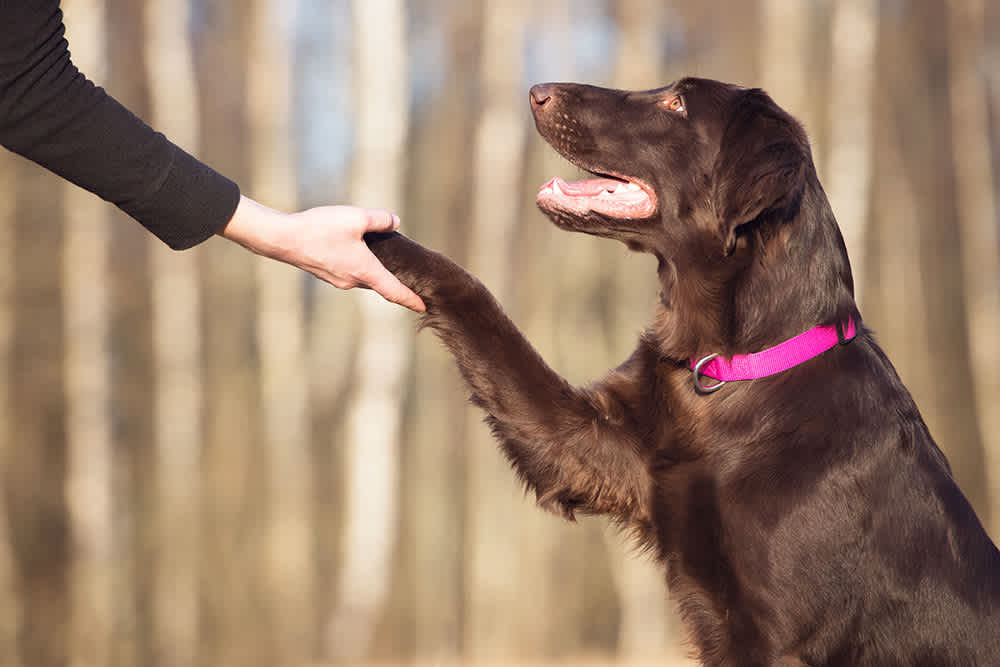A Step-by-Step Approach to Dog Training Success
A Step-by-Step Approach to Dog Training Success
Blog Article
The Ultimate Guide to Pet Dog Training: Transform Your Pet dog's Behavior
Efficient dog training is crucial for promoting an unified connection in between animals and their proprietors. This guide not only intends to furnish you with the necessary devices to change your dog's actions but also welcomes you to discover how these foundational concepts can lead to a much deeper connection with your family pet.
Understanding Pet Dog Behavior
Comprehending pet behavior is vital for effective training and a harmonious connection between pet dogs and their owners. A dog's habits is influenced by a combination of genetics, atmosphere, and experiences. Dog training. Acknowledging these factors allows owners to tailor their training approaches to meet the individual demands of their animals
Canines interact mainly with body language, vocalizations, and facial expressions. A wagging tail can suggest enjoyment or happiness, while a put tail might signify anxiety or entry. Observing these signs allows owners to respond properly, reinforcing favorable actions and addressing adverse ones effectively.
In addition, comprehending the social structure of pets can offer insights into their behavior. Pets are pack pets, and they grow in a structured environment. Developing constant policies and clear limits can prevent complication and advertise a feeling of protection.
Furthermore, identifying the natural instincts of pets, such as the desire to go after or dig, is critical. These impulses can be redirected via proper outlets, such as play or workout. By comprehensively recognizing these behavior facets, owners can promote a favorable training experience, eventually resulting in a loyal and well-adjusted canine companion.
Vital Educating Techniques
Effective canine training counts on a variety of essential methods that can significantly improve the discovering procedure for both the dog and the owner. One basic technique is positive reinforcement, which involves satisfying preferable actions with deals with, appreciation, or play. This method urges canines to duplicate the habits that cause positive end results, promoting a trusting connection between the pet dog and proprietor.
One more secret method is consistency in commands and assumptions. Making use of the very same spoken signs and hand signals assists the pet dog recognize what is called for, reducing complication and advertising quicker understanding. Additionally, developing clear limits and policies is critical for reliable interaction.
Socialization is likewise an essential part of training. Revealing pet dogs to different environments, people, and other pets assists them establish suitable social abilities and minimizes anxiousness in unknown situations.
Lastly, perseverance and timing are crucial. Educating sessions need to be short however frequent, making sure that the pet continues to be involved and responsive. By utilizing these crucial strategies, proprietors can create a organized and positive training experience that advertises good actions and reinforces the bond with their canine companions.
Developing a Training Schedule
Just how can a well-structured training schedule boost a canine's learning experience? A training routine offers uniformity, making sure that dogs get regular, focused guideline. This predictability helps pet dogs understand what is expected of them, enhancing their knowing and enabling much better retention of commands and actions.
When producing a training timetable, it is crucial to take into click over here now consideration the dog's age, breed, and click for info specific temperament. Young young puppies may benefit from much shorter, extra frequent sessions, while adult canines might flourish with longer, less regular training durations. Incorporating a selection of activities can additionally maintain the sessions involving, avoiding monotony and promoting enthusiasm for knowing.
Furthermore, organizing training sessions at details times of the day can help solidify a routine. As an example, coupling training with day-to-day strolls or play can produce a favorable organization with learning. It is additionally vital to consist of time for support, such as treats or appreciation, to award preferred habits immediately.
Finally, adaptability is key. While consistency is vital, being adaptable to the dog's state of mind or power degree can boost their understanding experience. A well-crafted training timetable inevitably lays the structure for efficient communication and a stronger bond between the pet and proprietor.
Typical Training Challenges
Despite having a well-structured training timetable, pet proprietors commonly run into numerous difficulties during the training process. One usual problem is disparity in cues and commands. When numerous member of the family use different terms or tones, a canine might end up being baffled, hindering its ability to discover successfully.
An additional frequent difficulty is distraction. Dog training. Pets are naturally interested creatures, and exterior stimuli such as other pets, noises, or individuals can divert their attention throughout training sessions. This requires proprietors to produce a controlled setting or gradually present distractions to reinforce focus
Additionally, differing power levels can affect training results. High-energy pets might have a hard time to settle and concentrate, while extra laid-back types could require additional inspiration to involve. Tailoring the training strategy to fit the private dog's character is vital for success.

Building a Solid Bond
A solid bond in between a dog and its owner is vital for effective training and overall health. Dog training. This partnership cultivates trust, which is important for efficient interaction throughout the training procedure. When a canine feels linked and safe and secure to its owner, it is most likely to respond positively to hints and commands
To develop this bond, consistency is essential. Establishing a routine that includes normal feeding, exercise, and training sessions helps create a feeling of security. In addition, positive support strategies, such as deals with, appreciation, and play, strengthen preferred habits while reinforcing the emotional link.
Socialization is one more important aspect of bond-building. Revealing your dog to various settings, people, and other pets assists them feel extra certain and comfortable, enhancing the bond with their owner. important source Participating in tasks with each other, such as strolling, playing bring, or taking part in obedience training, promotes synergy and shared pleasure.
Conclusion

Comprehending dog habits is crucial for effective training and an unified connection in between dogs and their owners.Efficient pet training relies on a variety of essential techniques that can substantially boost the knowing procedure for both the dog and the proprietor.Regardless of having a well-structured training timetable, dog owners typically run into different obstacles throughout the training procedure.In conclusion, effective canine training depends on a thorough understanding of canine actions, the application of necessary strategies, and the facility of an organized training routine. By emphasizing positive reinforcement and consistency, canine owners can considerably enhance their animals' behavior, ultimately making sure an unified partnership and advertising the health of both the pet and its setting.
Report this page